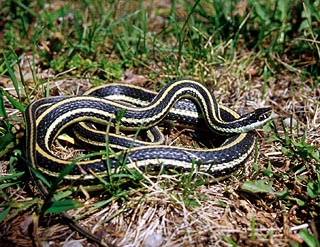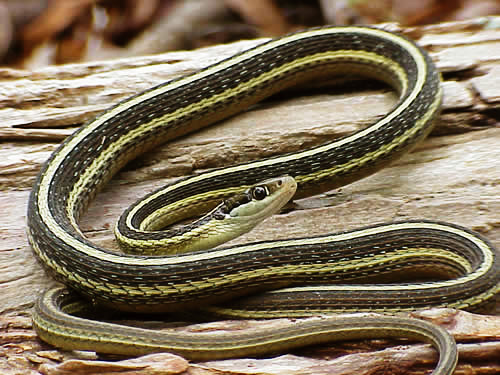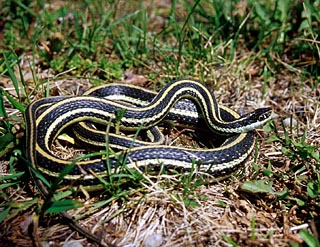
Southern Ribbon Snake:
(Thamnophis sauritus sackenii)
Southern ribbon snakes (thamnophis sauritus sackenii), commonly known as the peninsula ribbon snake and a species of the garter snakes is a member of the colubridae family. They average in size between 20 to 28 inches long, with the record being 40 inches long.
Southern ribbon snakes have slender bodies. They are olive – brown, with a light tannish brown stripe on the center of its back. They also have a light whitish – green colored stripe on each side of its body, with light whitish checkered markings between the stripes. Their heads are small and oval shaped and their pupils are round. Their bellies are yellowish – green.
Southern ribbon snakes are found throughout the eastern panhandle, south into the Florida Keys, excluding the Gulf coast from eastern Wakulla County south to Hernando County. Southern ribbon snakes prefer to inhabit areas such as pine – lands, hardwood hammocks, cypress strands, prairies, marshes, streams, ponds, bogs and stands of melaleuca.
Southern ribbon snakes are carnivores, primarily consuming small fish, salamanders, frogs, insects and earthworms.
Southern ribbon snakes are diurnal, mainly active during the day. They are also semi – aquatic and are often found along banks, canals, ditches and around houses. Sometimes at night after heavy rains, they are found crossing roads in search of food. Southern ribbon snakes are usually not aggressive, but they will strike and bite to defend themselves. They are completely harmless to humans, although their bites may be harmless it may cause some swelling, itching, burning and slight bleeding, including the risk of a bacterial infection.

